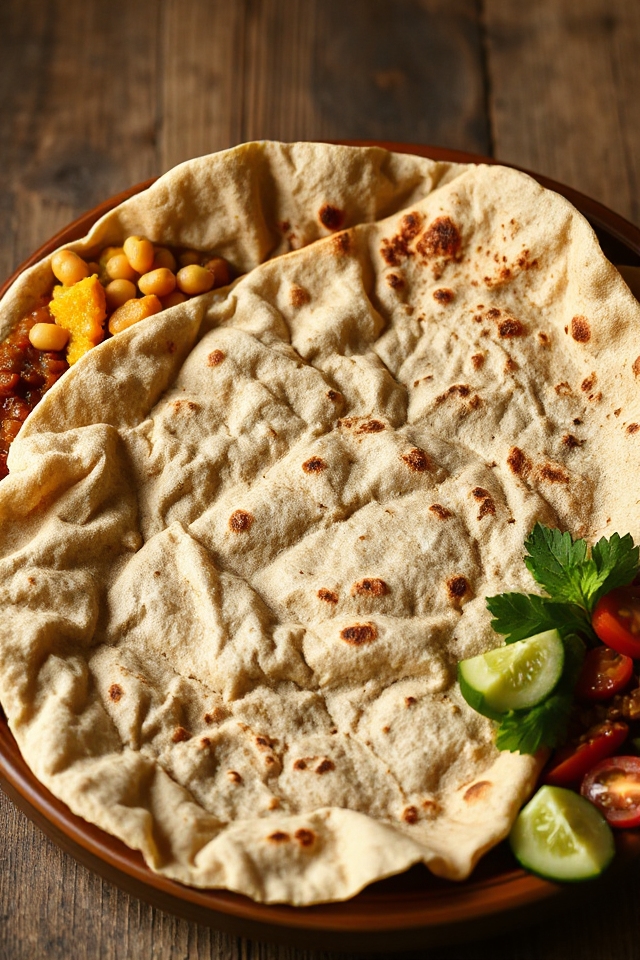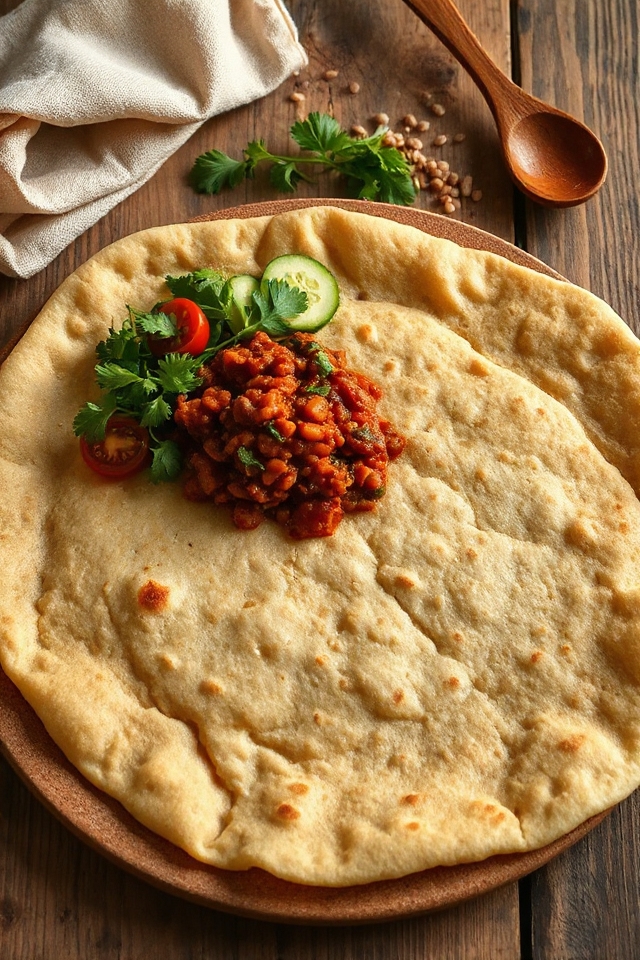Why You’ll Love This Injera (Fermented Sourdough Bread) Recipe
Injera is a culinary delight that brings a unique twist to any meal. I love how its tangy flavor pairs perfectly with a variety of stews and vegetables, making every bite a burst of excitement.
The texture is soft yet slightly spongy, ideal for scooping up flavorful dishes. Plus, it’s a fantastic way to impress guests with something truly different. I can’t help but feel connected to the rich culture of Ethiopia every time I serve it.
Once you try this recipe, you’ll understand why injera will become a staple in your kitchen, bringing joy to your dining experience.
Ingredients of Injera (Fermented Sourdough Bread)
Making injera is a delightful experience that starts with just a few simple ingredients, but the magic truly happens when they come together. Teff flour gives injera its distinctive flavor and texture, while barley and wheat flours add a bit of depth. The best part? You don’t need to be a master baker to whip this up in your kitchen. Just a little patience and love, and you’ll be on your way to serving this delicious Ethiopian bread.
Ingredients:
- 1 1/2 lbs teff flour
- 1/2 lb barley flour
- 1/4 cup wheat flour
- 12 cups water (for fermenting the teff flour)
Now, let’s talk a little about these ingredients. Teff flour is the star of the show, and it’s what gives injera its unique taste. If you’re feeling adventurous, you can experiment with different ratios of flours, but teff is a must-have for that authentic flavor.
Barley flour adds a nice nuttiness, while wheat flour helps with texture. And don’t forget about that water—it’s essential for the fermentation process. When combining everything, make sure to stir well, but don’t stress if it looks a little lumpy at first. Just think of it as the bread’s way of keeping things interesting.
How to Make Injera (Fermented Sourdough Bread)

Making injera isn’t just cooking; it’s an experience that requires a little time but a whole lot of love. So, let’s roll up our sleeves and immerse ourselves in the process of creating this delicious fermented sourdough bread.
First things first, you’re going to need 1 1/2 pounds of teff flour. Combine that with 12 cups of water in a large bowl. Stir it up good—don’t worry if it looks a little lumpy; that just adds character.
Now, cover it with a cloth and stash it somewhere dark and cool for about 3 to 4 days. Yes, you read that right—patience is key here. Each day, peek in and give it a gentle stir, letting the anticipation build as it ferments and develops that signature sour flavor.
On the last day of fermentation, it’s time to bring in the reinforcements. Grab 1/2 pound of barley flour and 1/4 cup of wheat flour, and mix them into your teff mixture. Let this blend rest for another 8 hours.
I know, I know, waiting again—can’t a person just bake? But trust me, this step is essential for getting that perfect texture and depth of flavor.
Once the resting period is up, heat a large cast-iron pan over medium heat. Now, pour 1 cup of your fermented mixture into the pan, and swirl it around to cover the entire surface.
Cover with a lid and let it cook for 2 to 3 minutes. The magic happens as holes form on the surface—the telltale sign that your injera is ready to be plated.
And just like that, you’ve created something special, something that pairs perfectly with stews and salads. You did it! Enjoy your homemade injera with pride.
Injera (Fermented Sourdough Bread) Substitutions & Variations
When it comes to creating injera, you don’t have to stick strictly to traditional ingredients; there are plenty of substitutions and variations to explore.
For instance, you can experiment with gluten-free flours like millet or sorghum instead of teff. If you want a different flavor profile, try adding a bit of whole wheat flour or even quinoa flour.
I’ve also mixed in spices or herbs for a unique twist. You can adjust the fermentation time based on your taste preferences, letting it sour longer for a stronger flavor.
Don’t hesitate to get creative—your injera can be as unique as you are!
Additional Tips & Notes
Experimenting with different ingredients can lead to some exciting variations in your injera. I’ve found that adding a pinch of salt enhances the flavor, but don’t overdo it!
If you prefer a lighter texture, try mixing in some all-purpose flour. Remember, the fermentation process is key to achieving that signature sour taste, so keep an eye on the temperature. If it’s too warm, it might ferment too quickly.
Finally, be patient while cooking; the perfect injera should have those beautiful holes. Enjoy the process, and don’t hesitate to adjust based on your taste preferences! Happy baking!
